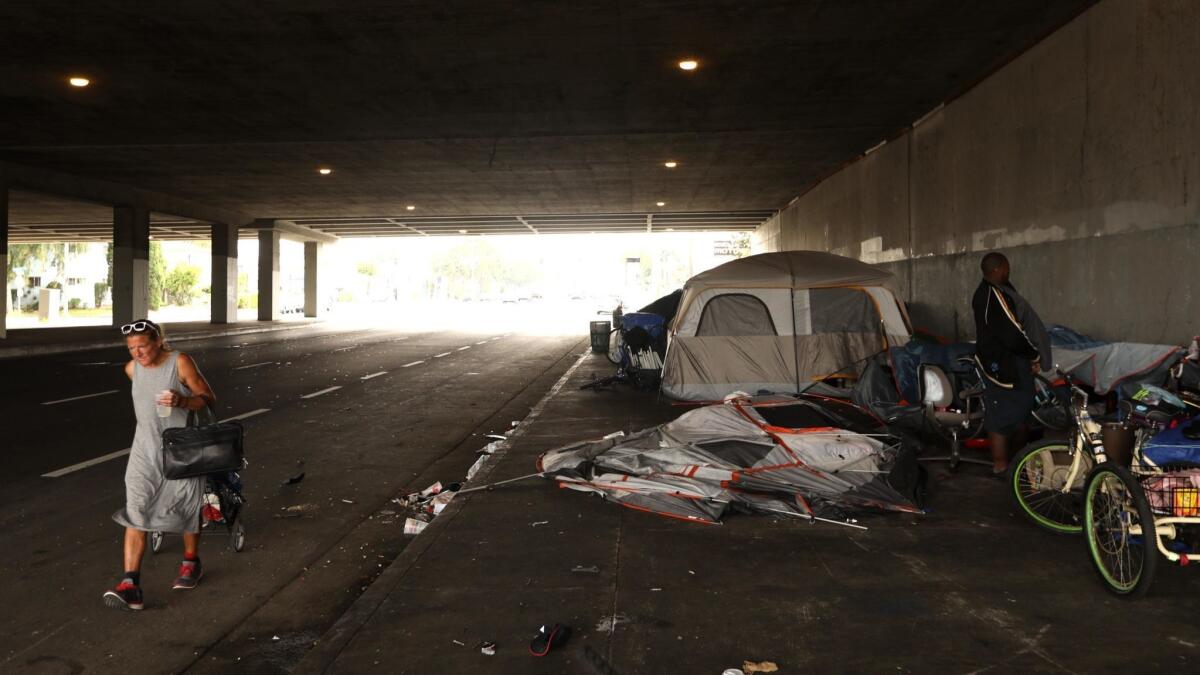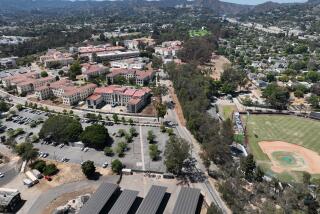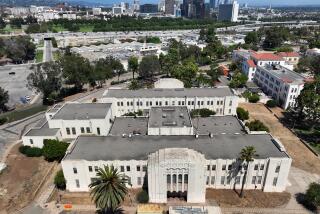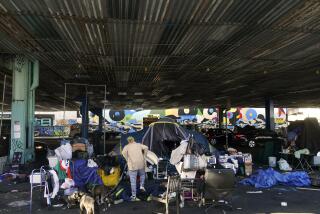Judge issues order for Los Angeles to move homeless living near freeways, citing health concerns

Thousands of homeless people living near freeways in Los Angeles County are in line to receive alternative shelter during the COVID-19 pandemic after a federal court judge ordered local authorities to find them housing.
The preliminary injunction, issued Friday by U.S. District Judge David O. Carter, requires city, county and homelessness officials to provide space in shelters or alternative housing for the estimated 6,000 to 7,000 county residents living near freeway overpasses, underpasses and ramps. Carter’s ruling compels local governments to develop a plan for doing so by Friday.
Homeless residents living near freeways are not only at risk of contracting COVID-19 and spreading the disease throughout the community, but also of being exposed to lead and other carcinogens as well as being hit by cars, Carter wrote in the ruling.
“As with many issues involving individuals experiencing homelessness, no party appears to be addressing this problem with any urgency,” Carter wrote.
The order would apply to an estimated 3,000 to 4,000 homeless residents living near freeways in the city of Los Angeles, with the remainder living near freeways in other L.A. County cities or unincorporated areas.
Carter’s decision is the most definitive step he’s taken to compel local leaders to address the estimated 60,000 homeless residents throughout the county. In March, the advocacy group L.A. Alliance for Human Rights sued public agencies across the county, accusing them of allowing unsafe and inhumane conditions in homeless camps.
Since the case was filed, Carter has persuaded L.A. Mayor Eric Garcetti and other local officials to come up with solutions to the region’s homelessness problems more quickly, especially given the coronavirus outbreak. The judge has personally toured skid row and other homeless hot spots throughout the region to better understand the issue.
Daniel Conway, policy advisor with the alliance, said it was clear Carter was becoming frustrated with the lack of definitive action. Conway hoped the ruling was the first step toward the judge guiding a radical shift in how the region handles homelessness issues.
“Everyone’s committed to seeing this through,” Conway said. “The challenge becomes, how high are we aiming here? Are we trying to meet thresholds for the sake of a legal settlement or are we trying to fundamentally change how we deal with homelessness?”
It’s unclear how city, county and homelessness officials will respond to the order, though Carter laid out guidelines on what shelter must be offered.
All shelters and alternative housing must allow for at least six feet of distance between residents, provide adequate hygiene options and nursing and security staff. Homeless residents must be allowed to retain possession of their belongings and be given notice of available housing. While homeless residents could not be ordered to go to a shelter or alternative housing, they could be required to move away from a freeway once sufficient housing is available.
The most significant new program to house homeless residents during the pandemic is Project Roomkey, a statewide effort that uses empty hotel and motel rooms. In Los Angeles, however, just over 2,000 previously homeless residents are sheltered with about 500 other beds available, according to information provided in court Friday by the Los Angeles Homeless Services Authority, not nearly enough space to comply with Carter’s order.
Carter’s order allows parties in the case to develop an alternative plan and submit it to him for review by Tuesday.
More to Read
Sign up for Essential California
The most important California stories and recommendations in your inbox every morning.
You may occasionally receive promotional content from the Los Angeles Times.











